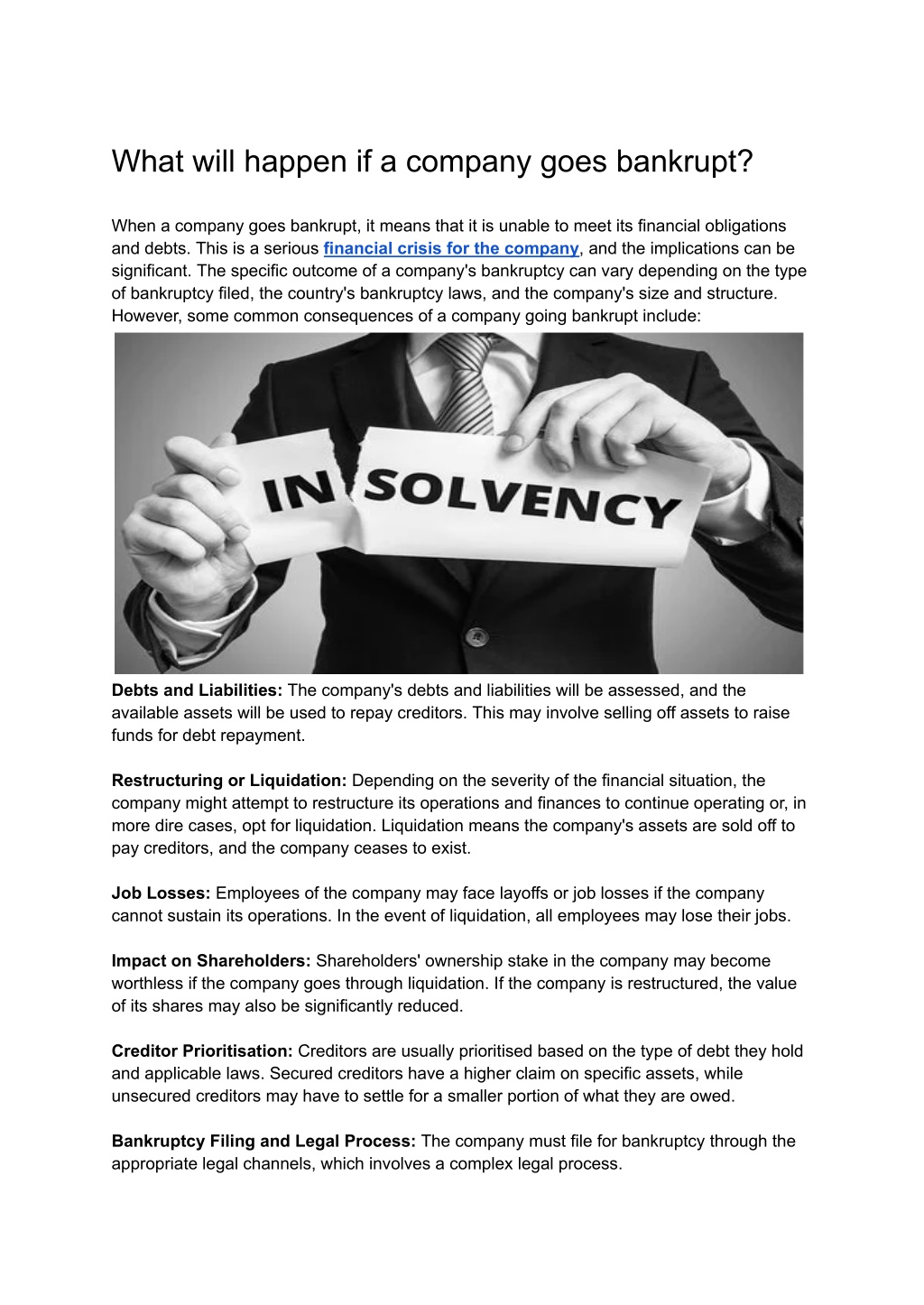Understanding the Effects of Business Liquidation on Worker Retention and Benefits

Influence On Task Safety And Security
In the occasion of firm liquidation, the impact on work protection can be considerable for workers as unpredictability relating to future employment arises. When a business enters into liquidation, employees encounter the difficult possibility of prospective job loss. This unpredictability can bring about enhanced stress and anxiousness amongst the labor force, impacting their spirits and productivity.
During the liquidation process, staff members may experience a series of feelings, including rage, worry, and aggravation, as they grapple with the possibility of joblessness. The absence of clarity bordering the timeline of the liquidation and the fate of their placements can create a feeling of instability within the workforce.
In addition, workers might also be worried about the condition of their benefits, such as health care insurance coverage, retirement plans, and paid pause, during and after the liquidation process. The possible loss of these benefits includes another layer of complexity to a currently tough scenario for workers.
Adjustments in Employee Conveniences

One typical adjustment is the decrease or elimination of specific benefits to cut prices and clear up outstanding debts. For instance, company contributions to retirement might stop, leaving employees to carry the complete obligation of saving for their future. In addition, medical care benefits might be downsized, causing greater out-of-pocket expenses for medical solutions.
Interaction ends up being critical throughout this period of change. Companies need to be transparent concerning the changes, giving clear descriptions and assistance to aid employees browse with the modifications. Open discussion and assistance can aid relieve anxiety and unpredictability amongst the labor force, fostering a much more positive transition experience in spite of the tough situations.
Retention Strategies Post-Liquidation
Complying with the firm liquidation, executing reliable retention strategies is important to guarding organizational talent and preserving stability within the workforce. In times of uncertainty, workers may feel distressed about their future job security and be much more inclined to look for alternate work possibilities. To minimize this risk, firms must concentrate on open interaction, giving openness relating to the business's situation, and offering assistance to staff members throughout the shift period.
One key retention strategy site web post-liquidation is to prioritize staff member wellness and morale. This can be achieved through regular check-ins, counseling solutions, and producing a positive workplace. Furthermore, providing career growth chances and upskilling programs can increase staff member inspiration and engagement throughout difficult times. Recognizing and compensating workers for their loyalty and dedication can likewise promote a sense of loyalty and dedication to the company.
In addition, developing a clear profession progression path and establishing reasonable objectives can give staff members a sense of direction and function within the firm (do employees get paid when company goes into liquidation). By purchasing staff member development and actively entailing them in decision-making processes, companies can boost employee retention rates and build a resilient labor force post-liquidation
Legal Rights and Securities
Throughout the consequences of company liquidation, it is essential to resolve the legal rights and securities available to employees to guarantee a reasonable and compliant procedure. Employees encountering task loss as a result of liquidation have details rights protected by work regulations. These rights include privileges to overdue earnings, discontinuance wage if suitable, and accumulated vacation or authorized leave payouts. If required to navigate the intricacies of the liquidation process., it is crucial for workers to comprehend these civil liberties and seek legal suggestions.
Additionally, in instances where a business enters into liquidation, workers are frequently taken into consideration preferential lenders, granting them higher top priority in obtaining exceptional settlements over other lenders. This defense helps focus on clearing up worker claims prior to various other economic responsibilities are met. Additionally, legal safeguards exist to stop unreasonable dismissals throughout liquidation, ensuring that discontinuations are carried out according to developed labor legislations. Comprehending these lawful civil liberties and protections is fundamental for employees to secure their passions and seek proper recourse in the event of business liquidation.
Handling Financial Uncertainty
Navigating monetary unpredictability can be a daunting difficulty for workers influenced by business liquidation. During such times, it is crucial for staff members to assess their current financial scenario realistically.
It is important for staff members to stay notified about helpful site their entitlements, such as severance plans or outstanding repayments, to ensure they get what they are owed. By proactively addressing financial obstacles, workers can navigate via the unpredictability triggered by company liquidation with greater resilience and preparedness.
Conclusion
To conclude, company liquidation can have substantial implications on staff member job security, advantages, and overall well-being. It is important for companies to apply retention techniques and give assistance to workers during this unpredictable time. Comprehending lawful civil liberties and protections can help reduce the influence of liquidation on workers. Dealing with monetary linked here unpredictability calls for a proactive strategy and communication from both companies and workers to navigate through the challenges efficiently.
When a business encounters liquidation, the destiny of its staff members hangs in the equilibrium, elevating vital questions about work safety and security, benefits, and long-lasting security. The impact of company liquidation on staff member retention and advantages is a multifaceted problem that demands a more detailed exam to understand the full scope of its effects.
Browsing financial uncertainty can be a complicated challenge for workers impacted by company liquidation. By proactively resolving financial obstacles, workers can navigate via the unpredictability triggered by company liquidation with greater strength and readiness.

Comments on “If a Company Goes Into Administration, Do I Have to Pay Administration Staff? Recognizing Employee Payments in Liquidation”